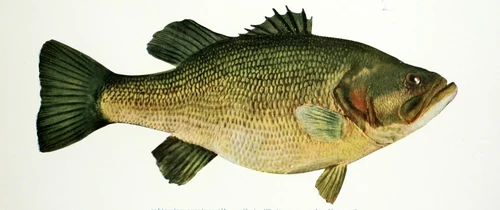Information
Author: Caroline Marques Maia
Version: C | 1.1Published: 2024-12-31
- minor editorial changes plus new side note "Commercial relevance"
- internal profile review resulting in major editorial and content changes (changing the scoring in criteria 5 and 7)
no information available
WelfareScore | farm
The score card gives our welfare assessments for aquatic species in 10 criteria.
For each criterion, we score the probability to experience good welfare under minimal farming conditions ("Likelihood") and under high-standard farming conditions ("Potential") representing the worst and best case scenario. The third dimension scores how certain we are of our assessments based on the number and quality of sources we found ("Certainty").
The WelfareScore sums just the "High" scores in each dimension. Although good welfare ("High") seems not possible in some criteria, there could be at least a potential improvement from low to medium welfare (indicated by ➚ and the number of criteria).
- Li = Likelihood that the individuals of the species experience good welfare under minimal farming conditions
- Po = Potential of the individuals of the species to experience good welfare under high-standard farming conditions
➚ = potential improvements not reaching "High" - Ce = Certainty of our findings in Likelihood and Potential
WelfareScore = Sum of criteria scoring "High" (max. 10 per dimension)
General remarks
Micropterus salmoides is a subtropical freshwater fish naturally inhabiting shallow vegetated waters of lakes, ponds, swamps, backwaters, pools of creeks, and small to large rivers in North America. Its distribution comprises St. Lawrence and Great Lakes, Mississippi River basins, and Atlantic and Gulf drainages. In aquaculture, besides being considered an excellent food species, it has been introduced widely as a game fish. Several countries report adverse ecological impact after its introduction. Despite that, it is considered a very promising and valuable freshwater species for consumption, being one of the most economically important aquaculture species in China.
Pond culture remains as the dominant production method for M. salmoides, mainly based on monoculture under a high density, high feeding volume, and high water exchange rate. This species has some characteristics considered as advantages for aquaculture, such as excellent flesh quality, no intermuscular bones, rapid growth performance, short culture cycle, and strong adaptability. Despite that, there is still a lack of information considering malformation rates and slaughtering procedures on farms. Thus, further studies are needed to better assess and to improve the welfare of this species.
Note: due to reaching maturity after the typical age and weight at slaughter, there is no age class "Adults" under FARM in the profile. For information from the wild, the age class “Juveniles” may also refer to ADULTS and vice versa, as the literature does not always specify.
1 Home range
Many species traverse in a limited horizontal space (even if just for a certain period of time per year); the home range may be described as a species' understanding of its environment (i.e., its cognitive map) for the most important resources it needs access to.
What is the probability of providing the species' whole home range in captivity?
It is low for minimal farming conditions, as cages, raceways, tanks, containers, and some ponds do not cover – in fact not even overlap with – the whole range in the wild, although we cannot be sure in some age classes. It is medium for high-standard farming conditions, as other ponds at least overlap with the range in the wild. Our conclusion is based on a medium amount of evidence, as wild information is missing in LARVAE, FRY, and SPAWNERS.


2 Depth range
Given the availability of resources (food, shelter) or the need to avoid predators, species spend their time within a certain depth range.
What is the probability of providing the species' whole depth range in captivity?
It is low for minimal farming conditions, as cages, raceways, containers, and ponds do not cover the whole range in the wild, although we cannot be sure in some age classes. It is medium for high-standard farming conditions, as the mentioned systems at least overlap with the range in the wild. Our conclusion is based on a medium amount of evidence, as further farm information is needed for eggs, LARVAE, and FRY.


3 Migration
Some species undergo seasonal changes of environments for different purposes (feeding, spawning, etc.), and to move there, they migrate for more or less extensive distances.
What is the probability of providing farming conditions that are compatible with the migrating or habitat-changing behaviour of the species?
It is low for minimal farming conditions, as the species undertakes more or less extensive migrations, and we cannot be sure that providing each age class with their respective environmental conditions will satisfy their urge to migrate or whether they need to experience the transition. It is medium for high-standard farming conditions, a) as the space range in captivity overlaps with the migration distance, although we cannot be sure in some age classes or b) given the resident strain respectively, which needs to be verified for SPAWNERS. Our conclusion is based on a medium amount of evidence, as further research is needed on specific migration distances in the wild.


4 Reproduction
A species reproduces at a certain age, season, and sex ratio and possibly involving courtship rituals.
What is the probability of the species reproducing naturally in captivity without manipulation of these circumstances?
It is low for minimal farming conditions, as the species is manipulated (PHOTOPERIOD, temperature, hormonal manipulation). It is high for high-standard farming conditions, as natural breeding is possible and verified for the farming context. Our conclusion is based on a medium amount of evidence, as further research is needed.


5 Aggregation
Species differ in the way they co-exist with conspecifics or other species from being solitary to aggregating unstructured, casually roaming in shoals or closely coordinating in schools of varying densities.
What is the probability of providing farming conditions that are compatible with the aggregation behaviour of the species?
It is low for minimal farming conditions, as densities in containers, raceways, tanks, and some cages and ponds go beyond (or below) the smallest density in the wild. It is high for high-standard farming conditions, as densities in other ponds cover the density range in the wild (given JUVENILES ponds are applied to SPAWNERS). Our conclusion is based on a medium amount of evidence, as our transformations into IND/L (to be able to compare with the wild) are only approximations and as further research is needed, especially in the wild.


6 Aggression
There is a range of adverse reactions in species, spanning from being relatively indifferent towards others to defending valuable resources (e.g., food, territory, mates) to actively attacking opponents.
What is the probability of the species being non-aggressive and non-territorial in captivity?
It is low for minimal farming conditions, as the species is aggressive – even cannibalistic – in almost all age classes. It is medium for high-standard farming conditions, as ways to reduce (but not avoid) cannibalism (size homogeneity) are verified for the farming context, whereas other ways come with caveats: providing live prey is welfare-reducing for the prey species. Our conclusion is based on a medium amount of evidence.


7 Substrate
Depending on where in the water column the species lives, it differs in interacting with or relying on various substrates for feeding or covering purposes (e.g., plants, rocks and stones, sand and mud, turbidity).
What is the probability of providing the species' substrate and shelter needs in captivity?
It is low for minimal farming conditions, as almost all age classes of the species use substrate, but cages, raceways, tanks, containers, and some ponds are devoid of it. It is medium for high-standard farming conditions given a) hatching substrate for eggs and b) natural reproduction with spawning substrate in ponds for SPAWNERS; earthen ponds for LARVAE to JUVENILES which are not replaced by concrete bottom exist, but enrichment with aquatic vegetation or woody debris has to be verified for the farming context. Our conclusion is based on a medium amount of evidence.


8 Stress
Farming involves subjecting the species to diverse procedures (e.g., handling, air exposure, short-term confinement, short-term crowding, transport), sudden parameter changes or repeated disturbances (e.g., husbandry, size-grading).
What is the probability of the species not being stressed?
It is low for minimal farming conditions, as the species is stressed (water quality, confinement, crowding, density, transport). It is medium for high-standard farming conditions, as some ways to reduce (but not avoid) stress are verified for the farming context. Our conclusion is based on a low amount of evidence, as further research is needed for most age classes.


9 Malformations
Deformities that – in contrast to diseases – are commonly irreversible may indicate sub-optimal rearing conditions (e.g., mechanical stress during hatching and rearing, environmental factors unless mentioned in crit. 3, aquatic pollutants, nutritional deficiencies) or a general incompatibility of the species with being farmed.
What is the probability of the species being malformed rarely?
It is unclear for minimal and high-standard farming conditions, given we mainly found data from lab studies. Our conclusion is based on a low amount of evidence, as further research is needed on malformation rates in farms.


10 Slaughter
The cornerstone for a humane treatment is that slaughter a) immediately follows stunning (i.e., while the individual is unconscious), b) happens according to a clear and reproducible set of instructions verified under farming conditions, and c) avoids pain, suffering, and distress.
What is the probability of the species being slaughtered according to a humane slaughter protocol?
It is low for minimal farming conditions, as not finding anything about stunning/slaughter indicates that they probably die from asphyxia or through processing. It is unclear for high-standard farming conditions, as we did not find hints on how to improve the situation (stunning protocols in related species or in laboratory studies). Our conclusion is based on a low amount of evidence.


Side note: Domestication
Teletchea and Fontaine introduced 5 domestication levels illustrating how far species are from having their life cycle closed in captivity without wild input, how long they have been reared in captivity, and whether breeding programmes are in place.
What is the species’ domestication level?
DOMESTICATION LEVEL 259, level 5 being fully domesticated.
Side note: Forage fish in the feed
450-1,000 milliard wild-caught fishes end up being processed into fish meal and fish oil each year which contributes to overfishing and represents enormous suffering. There is a broad range of feeding types within species reared in captivity.
To what degree may fish meal and fish oil based on forage fish be replaced by non-forage fishery components (e.g., poultry blood meal) or sustainable sources (e.g., soybean cake)?
All age classes:
- WILD: native and non-native waters: carnivorous 27 48 22 33 49 14 19 28.
- FARM: fish meal may be partly* replaced by sustainable sources, but requiring a considerable increase in fish oil 13. Fish meal may be mostly* replaced by a mix of sustainable sources and non-forage fishery components 7.
- LAB: fish meal may be mostly* replaced by sustainable sources, but requiring a considerable increase in fish oil 60. Fish meal and fish oil may be partly* replaced by sustainable sources 61.
*partly = <51% – mostly = 51-99% – completely = 100%
Side note: Commercial relevance
How much is this species farmed annually?
480,136 t/year 1990-2019 amounting to estimated 706,000,000 IND/year 1990-2019 62.
Glossary
BENTHOPELAGIC = living and feeding near the bottom of a body of water, floating above the floor
DOMESTICATION LEVEL 2 = part of the life cycle closed in captivity, also known as capture-based aquaculture 59
FARM = setting in farming environment or under conditions simulating farming environment in terms of size of facility or number of individuals
FINGERLINGS = early juveniles with fully developed scales and working fins, the size of a human finger
FRY = larvae from external feeding on
IND = individuals
JUVENILES = fully developed but immature individuals
LAB = setting in laboratory environment
LARVAE = hatching to mouth opening
PHOTOPERIOD = duration of daylight
POTAMODROMOUS = migrating within fresh water
RAS = Recirculating Aquaculture System - almost completely closed system using filters to clean and recirculate water with the aim of reducing water input and with the advantage of enabling close control of environmental parameters to maintain high water quality
SPAWNERS = adults during the spawning season; in farms: adults that are kept as broodstock
TOTAL LENGTH = from snout to tip of caudal fin as compared to fork length (which measures from snout to fork of caudal fin) or standard length (from head to base of tail fin) or body length (from the base of the eye notch to the posterior end of the telson) 47
WILD = setting in the wild
Bibliography
2 Roncarati, A., R. Vicenzi, P. Melotti, and A. Dees. 2005. Largemouth bass (Micropterus salmoides Lacepede): reproduction management and larval rearing in Italy. Italian Journal of Animal Science 4: 586–588. https://doi.org/10.4081/ijas.2005.2s.586.
3 Fish, P. A., and J. Savitz. 1983. Variations in Home Ranges of Largemouth Bass, Yellow Perch, Bluegills, and Pumpkinseeds in an Illinois Lake. Transactions of the American Fisheries Society 112: 147–153. https://doi.org/10.1577/1548-8659(1983)112<147:VIHROL>2.0.CO;2.
4 Carmichael, G. J., J. R. Tomasso, B. A. Simco, and K. B. Davis. 1984. Confinement and Water Quality-Induced Stress in Largemouth Bass. Transactions of the American Fisheries Society 113: 767–777. https://doi.org/10.1577/1548-8659(1984)113<767:CAWQSI>2.0.CO;2.
5 Kubitza, F., and L. L Lovshin. 1997. Pond production of pellet-fed advanced juvenile and food-size largemouth bass. Aquaculture 149: 253–262. https://doi.org/10.1016/S0044-8486(96)01454-8.
6 Tidwell, J. H., C. D. Webster, S. D. Coyle, and G. Schulmeister. 1998. Effect of Stocking Density on Growth and Water Quality for Largemouth Bass Micropterus salmoides Growout in Ponds. Journal of the World Aquaculture Society 29: 79–83. https://doi.org/10.1111/j.1749-7345.1998.tb00302.x.
7 Cochran, N. J., S. D. Coyle, and J. H. Tidwell. 2009. Evaluation of Reduced Fish Meal Diets for Second Year Growout of the Largemouth Bass, Micropterus salmoides. Journal of the World Aquaculture Society 40: 735–743. https://doi.org/10.1111/j.1749-7345.2009.00293.x.
8 Quintero, H., L. A. Roy, J. Park, A. M. Kelly, and D. Heikes. 2019. Evaluation of alternative pond production systems for raising largemouth bass, Micropterus salmoides. Journal of the World Aquaculture Society 50: 622–632. https://doi.org/10.1111/jwas.12582.
9 Cooke, S. J., C. D. Suski, K. G. Ostrand, B. L. Tufts, and D. H. Wahl. 2004. Behavioral and physiological assessment of low concentrations of clove oil anaesthetic for handling and transporting largemouth bass (Micropterus salmoides). Aquaculture 239: 509–529. https://doi.org/10.1016/j.aquaculture.2004.06.028.
10 Bai, Junjie, and Shengjie Li. 2018. Development of Largemouth Bass (Micropterus salmoides) Culture. In Aquaculture in China: success stories and modern trends, ed. Jian-Fang Gui, Qisheng Tang, Zhongjie Li, Jiashou Liu, and Sena S. De Silva, 421–431. Hoboken, NJ: John Wiley & Sons.
11 Si, N., B. Jie, G. Cheng, Y. Ma, L. Dong, C. Gu, M. Cheng, Y. Wei, and K. Yu. 2023. Effect of Stocking Density on Culture Efficiency and Physiological Indicators of Largemouth Bass (Micropterus salmoides) under Recirculating Water Conditions in Land-Based Round Ponds. Aquaculture Research 2023: e4391306. https://doi.org/10.1155/2023/4391306.
12 Shi, M. 2007. The cage culture technique of largemouth bass. Jiangxi Fishery Sciences and Technology 2: 33–34.
13 Yang, P., W. Yao, Y. Wang, M. Li, X. Li, and X. Leng. 2022. Dietary effects of fish meal substitution with Clostridium autoethanogenum on flesh quality and metabolomics of largemouth bass (Micropterus salmoides). Aquaculture Reports 23: 101012. https://doi.org/10.1016/j.aqrep.2022.101012.
14 Wang, Y., J. Ni, Z. Nie, J. Gao, Y. Sun, N. Shao, Q. Li, J. Hu, P. Xu, and G. Xu. 2020. Effects of stocking density on growth, serum parameters, antioxidant status, liver and intestine histology and gene expression of largemouth bass (Micropterus salmoides) farmed in the in-pond raceway system. Aquaculture Research 51: 5228–5240. https://doi.org/10.1111/are.14862.
15 Ni, M., M. Liu, J. Lou, G. Mi, J. Yuan, and Z. Gu. 2021. Stocking density alters growth performance, serum biochemistry, digestive enzymes, immune response, and muscle quality of largemouth bass (Micropterus salmoides) in in-pond raceway system. Fish Physiology and Biochemistry 47: 1243–1255. https://doi.org/10.1007/s10695-021-00948-3.
16 Jia, E., W. Jiang, W. Liu, G. Jiang, X. Li, C. Chi, and D. Zhang. 2022. Crowding stress-related protein markers: New candidates for assessing welfare of largemouth bass reared in an in-pond raceway system. Aquaculture 550: 737821. https://doi.org/10.1016/j.aquaculture.2021.737821.
17 Romano, N., A. Surratt, N. Renukdas, J. Monico, N. Egnew, and A. K. Sinha. 2020. Assessing the feasibility of biofloc technology to largemouth bass Micropterus salmoides juveniles: Insights into their welfare and physiology. Aquaculture 520: 735008. https://doi.org/10.1016/j.aquaculture.2020.735008.
18 Penka, T., O. Malinovskyi, J. Kristan, A. Imentai, and T. Policar. 2021. Effect of density and mixed culture of largemouth bass (Micropterus salmoides) and pikeperch (Sander lucioperca) on growth, survival and feed conversion rate in intensive culture. Czech Journal of Animal Science 66: 428–440. https://doi.org/10.17221/59/2021-CJAS.
19 Wang, L., S.-p. Jia, X.-r. Guo, K. Lu, L. Zhang, J.-h. Gong, X.-p. Guo, et al. 2022. Effect of stocking density on growth of largemouth bass (Micropterus salmoides) cultured in containers in a land-based recirculating aquaculture system (C-RAS). Aquaculture Research 53: 1518–1526. https://doi.org/10.1111/are.15686.
20 Jia, R., L. Wang, Y. Hou, W. Feng, B. Li, and J. Zhu. 2022. Effects of Stocking Density on the Growth Performance, Physiological Parameters, Redox Status and Lipid Metabolism of Micropterus salmoides in Integrated Rice–Fish Farming Systems. Antioxidants 11: 1215. https://doi.org/10.3390/antiox11071215.
21 Sammons, S. M., and M. J. Maceina. 2005. Activity patterns of largemouth bass in a subtropical US reservoir. Fisheries Management and Ecology 12: 331–339. https://doi.org/10.1111/j.1365-2400.2005.00456.x.
22 Ahrenstorff, T. D., G. G. Sass, and M. R. Helmus. 2009. The influence of littoral zone coarse woody habitat on home range size, spatial distribution, and feeding ecology of largemouth bass (Micropterus salmoides). Hydrobiologia 623: 223–233. https://doi.org/10.1007/s10750-008-9660-1.
23 Hunter, R. W., and M. J. Maceina. 2008. Movements and Home Ranges of Largemouth Bass and Alabama Spotted Bass in Lake Martin, Alabama. Journal of Freshwater Ecology 23: 599–606. https://doi.org/10.1080/02705060.2008.9664247.
24 Hussein, G. H. G., M. Chen, P.-P. Qi, Q.-K. Cui, Y. Yu, W.-H. Hu, Y. Tian, et al. 2020. Aquaculture industry development, annual price analysis and out-of-season spawning in largemouth bass Micropterus salmoides. Aquaculture 519: 734901. https://doi.org/10.1016/j.aquaculture.2019.734901.
25 Hu, C.-H., H.-Q. Bie, Z.-Y. Lu, Y. Ding, H.-H. Guan, L.-H. Geng, S. Ma, Y.-X. Hu, Q.-X. Fan, and Z.-G. Shen. 2023. Out-of-season spawning of largemouth bass in a controllable recirculating system. Frontiers in Physiology 14. https://doi.org/10.3389/fphys.2023.1175075.
26 Nack, S. B., D. Bunnell, D. M. Green, and J. L. Forney. 1993. Spawning and Nursery Habitats of Largemouth Bass in the Tidal Hudson River. Transactions of the American Fisheries Society 122: 208–216. https://doi.org/10.1577/1548-8659(1993)122<0208:SANHOL>2.3.CO;2.
27 Elliot, G. V. 1976. Diel Activity and Feeding of Schooled Largemouth Bass Fry. Transactions of the American Fisheries Society 105: 624–627. https://doi.org/10.1577/1548-8659(1976)105<624:DAAFOS>2.0.CO;2.
28 Froese, R., and D. Pauly. 2023. Micropterus salmoides, Largemouth black bass: fisheries, aquaculture. World Wide Web electronic publication. FishBase.
29 Scott, W. B., and E. J. Crossman. 1973. Freshwater fishes of Canada. Bulletin ; No. 184 184. Ottawa: Fisheries Research Board of Canada.
30 Irwin, E. R., and R. L. Noble. 2000. Diel distribution of age-0 largemouth bass, Micropterus salmoides, in B. E. Jordan Lake, North Carolina (USA) and its relation to cover. Ecology of Freshwater Fish 9: 229–235. https://doi.org/10.1111/j.1600-0633.2000.eff090405.x.
31 Hasler, C. T., K. C. Hanson, S. J. Cooke, R. Tinline, C. D. Suski, G. Niezgoda, F. J. S. Phelan, and D. P. Philipp. 2007. Frequency, composition and stability of associations among individual largemouth bass (Micropterus salmoides) at diel, daily and seasonal scales. Ecology of Freshwater Fish 16: 417–424. https://doi.org/10.1111/j.1600-0633.2007.00239.x.
32 Slipke, Jeffery W., and Michael J. Maceina. 2007. Movement and Use of Backwater Habitats by Largemouth Bass and White Crappie in Demopolis Reservoir, Alabama. Journal of Freshwater Ecology 22: 393–401. https://doi.org/10.1080/02705060.2007.9664169.
33 Choi, J.-Y., and S.-K. Kim. 2020. Effects of Aquatic Macrophytes on Spatial Distribution and Feeding Habits of Exotic Fish Species Lepomis macrochirus and Micropterus salmoides in Shallow Reservoirs in South Korea. Sustainability 12: 1447. https://doi.org/10.3390/su12041447.
34 Karchesky, C. M., and D. H. Bennett. 2004. Winter Habitat Use by Adult Largemouth Bass in the Pend Oreille River, Idaho. North American Journal of Fisheries Management 24: 577–585. https://doi.org/10.1577/M02-175.1.
35 Hanson, K. C., S. Arrosa, C. T. Hasler, C. D. Suski, D. P. Philipp, G. Niezgoda, and S. J. Cooke. 2008. Effects of lunar cycles on the activity patterns and depth use of a temperate sport fish, the largemouth bass, Micropterus salmoides. Fisheries Management and Ecology 15: 357–364. https://doi.org/10.1111/j.1365-2400.2008.00634.x.
36 Bunt, C. M., B. Jacobson, T. Fernandes, L. Ridgway, and B. McMeans. 2021. Site fidelity and seasonal habitat preferences of largemouth bass (Micropterus salmoides) in a temperate regulated reservoir. Hydrobiologia 848: 2595–2609. https://doi.org/10.1007/s10750-021-04582-1.
37 Lawson, Z. J., J. W. Gaeta, and S. R. Carpenter. 2011. Coarse Woody Habitat, Lakeshore Residential Development, and Largemouth Bass Nesting Behavior. North American Journal of Fisheries Management 31: 666–670. https://doi.org/10.1080/02755947.2011.608990.
38 Copeland, John R., and Richard L. Noble. 1994. Movements by Young-of-Year and Yearling Largemouth Bass and Their Implications for Supplemental Stocking. North American Journal of Fisheries Management 14: 119–124. https://doi.org/10.1577/1548-8675(1994)014<0119:MBYOYA>2.3.CO;2.
39 Terofal, F. 1984. Süsswasserfische in europaischen Gewassern. Munich: Mosaik Verlag.
40 Carlson, Anthony R. 1973. Induced Spawning of Largemouth Bass [Micropterus salmoides (Lacépède)]. Transactions of the American Fisheries Society 102: 442–444. https://doi.org/10.1577/1548-8659(1973)102<442:ISOLBM>2.0.CO;2.
41 Becker, G.C. 1983. Fishes of Wisconsin. Madison (WI): University of Wisconsin Press. Madison (WI): University of Wisconsin Press.
42 Dassow, C. J., A. Collier, J. Y. S. Hodgson, C. D. Buelo, and J. R. Hodgson. 2018. Filial cannibalism by largemouth bass (Micropterus salmoides): a three-decade natural history record from a small northern temperate lake. Journal of Freshwater Ecology 33: 361–379. https://doi.org/10.1080/02705060.2018.1477691.
43 Gross, M. R., and R. C. Sargent. 1985. The evolution of male and female parental care in fishes. American Zoologist 25: 807–822.
44 Johnson, J. M., and D. M. Post. 1996. Morphological Constraints on Intracohort Cannibalism in Age-0 Largemouth Bass. Transactions of the American Fisheries Society 125: 809–812. https://doi.org/10.1577/1548-8659(1996)125<0809:MCOICI>2.3.CO;2.
45 Maia, Caroline Marques. 2023. Conclusion.
46 Carlson, D.M. 1992. Importance of winter refugia to the largemouth bass fishery in the Hudson River estuary. Journal of Freshwater Ecology 7: 173–180.
47 Pawson, M.G., and G.D. Pickett. 1996. The Annual Pattern of Condition and Maturity in Bass, Dicentrarchus Labrax, in Waters Around England and Wales. Journal of the Marine Biological Association of the United Kingdom 76: 107. https://doi.org/10.1017/S0025315400029040.
48 Ward, S. M., and R. M. Neumann. 1998. Seasonal and Size-Related Food Habits of Largemouth Bass in Two Connecticut Lakes. Journal of Freshwater Ecology 13: 213–220. https://doi.org/10.1080/02705060.1998.9663609.
49 Yasuno, N., Y. Fujimoto, T. Shimada, S. Shikano, and E. Kikuchi. 2020. Unbalanced population structure and reliance on intraspecific predation by largemouth bass in an agricultural pond with no available prey fish. Journal of Freshwater Ecology 35: 523–534. https://doi.org/10.1080/02705060.2020.1853621.
50 Fleming, I. A., and P. H. Johansen. 1984. Density and agonistic behaviour in young-of-the-year largemouth bass (Micropterus salmoides). Canadian Journal of Zoology 62: 1454–1455. https://doi.org/10.1139/z84-209.
51 Page, Lawrence M., and Brooks M. Burr. 2011. A Field Guide to Freshwater Fishes of North America North of Mexico. Houghton Mifflin Harcourt.
52 Carmichael, G. J. 1984. Long Distance Truck Transport of Intensively Reared Largemouth Bass. The Progressive Fish-Culturist 46: 111–115. https://doi.org/10.1577/1548-8640(1984)46<111:LDTTOI>2.0.CO;2.
53 Zhang, Y., A. Shitu, S. Hang, Z. Ye, W. Xu, H. Zhao, J. Zhao, and S. Zhu. 2023. Assessing the Impacts of Aquaculture Soundscapes on the Growth, Physiology and Behavior of Micropterus salmoides. Fishes 8: 377. https://doi.org/10.3390/fishes8070377.
54 Hang, S., J. Zhao, B. Ji, H. Li, Y. Zhang, Z. Peng, F. Zhou, X. Ding, and Z. Ye. 2021. Impact of underwater noise on the growth, physiology and behavior of Micropterus salmoides in industrial recirculating aquaculture systems. Environmental Pollution 291: 118152. https://doi.org/10.1016/j.envpol.2021.118152.
55 Xi, S., P. Y., L. Tian, Y. Liu, B. Tan, and J. Niu. 2020. Interactions between dietary lipid levels and chronic exposure of legal aquaculture dose of sulfamethoxazole in juvenile largemouth bass Micropterus salmoides. Aquatic Toxicology 229: 105670. https://doi.org/10.1016/j.aquatox.2020.105670.
56 Liu, Y.-H., Y. Zhao, D. Zhu, X. Wang, and Y. Yang. 2022. 1,8-cineole and ginger extract (Zingiber officinale Rosc) as stress mitigator for transportation of largemouth bass (Micropterus salmoides L.). Aquaculture 561: 738622. https://doi.org/10.1016/j.aquaculture.2022.738622.
57 Qu, S.-Y., X.-P. Tan, B.-K. Li, J.-T. Liu, G.-X. Wang, and F. Ling. 2022. Malformed largemouth bass (Micropterus salmoides) are more susceptible and vulnerable to Ichthyophthirius multifiliis infections: Immunological and histopathological study. Aquaculture 548: 737664. https://doi.org/10.1016/j.aquaculture.2021.737664.
58 Tidwell, J.H., C.D. Webster, and S.D. Coyle. 1996. Effects of dietary protein level on second year growth and water quality for largemouth bass (Microprerus salmoides) raised in ponds. Aquaculture 145: 213–223.
59 Teletchea, Fabrice, and Pascal Fontaine. 2012. Levels of domestication in fish: implications for the sustainable future of aquaculture. Fish and Fisheries 15: 181–195. https://doi.org/10.1111/faf.12006.
60 Zhu, S., W. Gao, Z. Wen, S. Chi, Y. Shi, W. Hu, and B. Tan. 2022. Partial substitution of fish meal by Clostridium autoethanogenum protein in the diets of juvenile largemouth bass (Micropterus salmoides). Aquaculture Reports 22: 100938. https://doi.org/10.1016/j.aqrep.2021.100938.
61 Liao, H., P. Liu, Y. Deng, W. Zhang, C. Pan, Y. Jia, F. Long, and H. Tang. 2022. Feeding effects of low-level fish meal replacement by algal meals of Schizochytrium limacinum and Nannochloropsis salina on largemouth bass (Micropterus salmoides). Aquaculture 557: 738311. https://doi.org/10.1016/j.aquaculture.2022.738311.
62 Mood, Alison, Elena Lara, Natasha K. Boyland, and Phil Brooke. 2023. Estimating global numbers of farmed fishes killed for food annually from 1990 to 2019. Animal Welfare 32: e12. https://doi.org/10.1017/awf.2023.4.
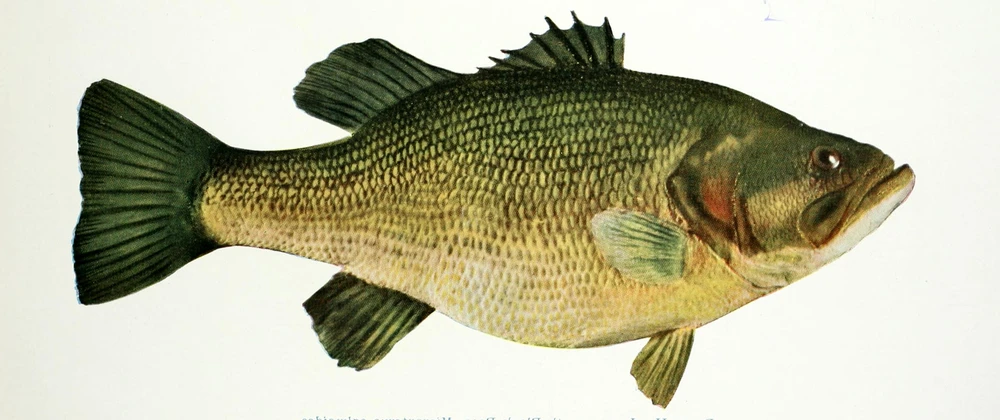
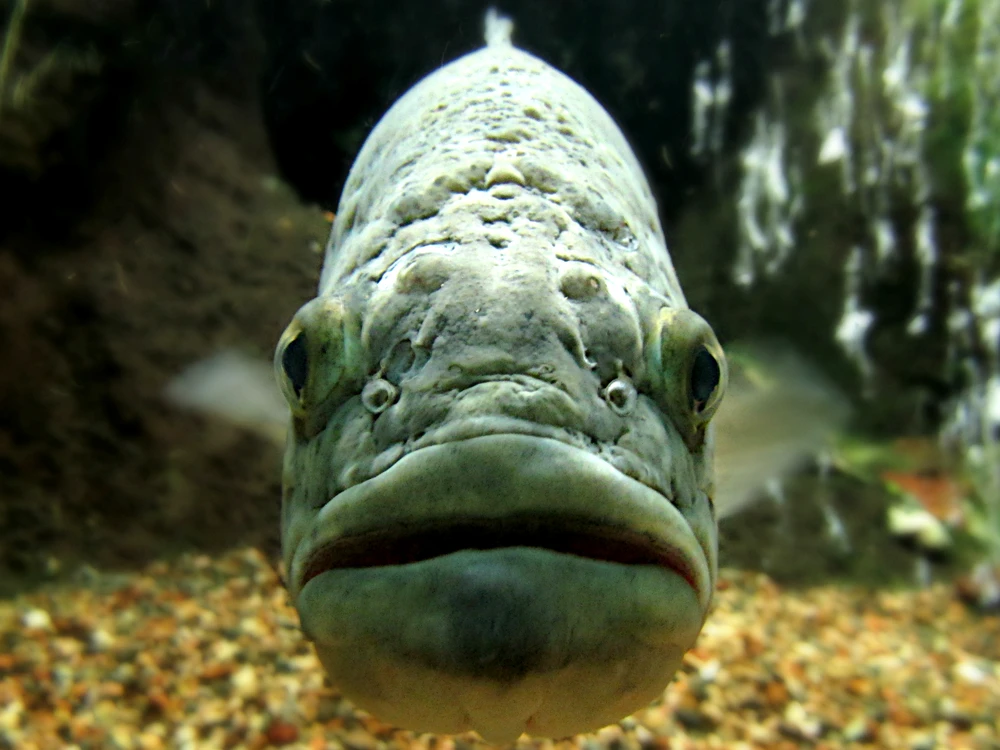
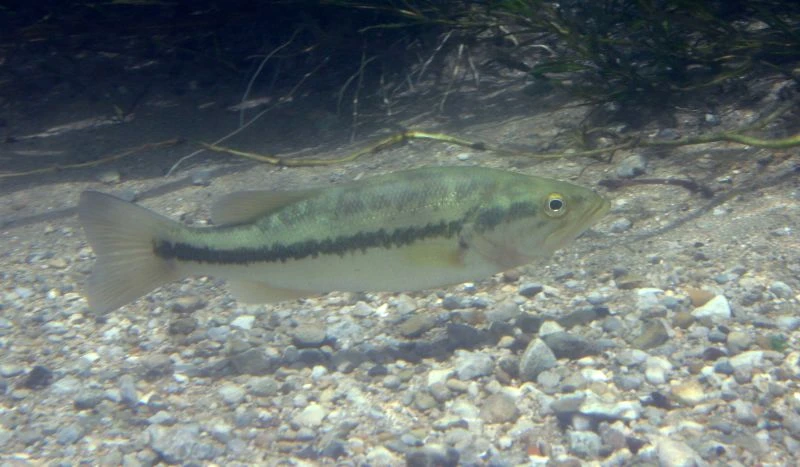
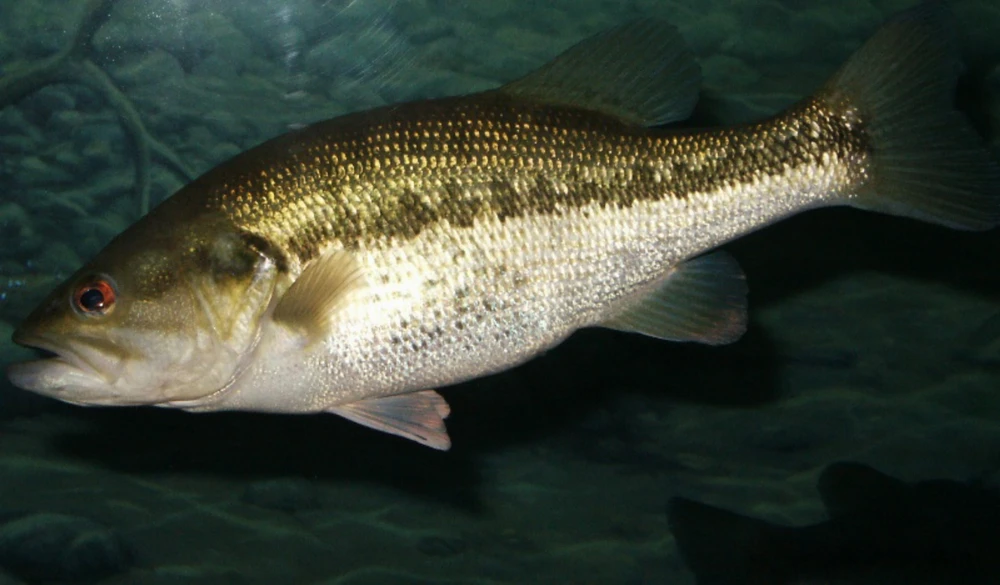
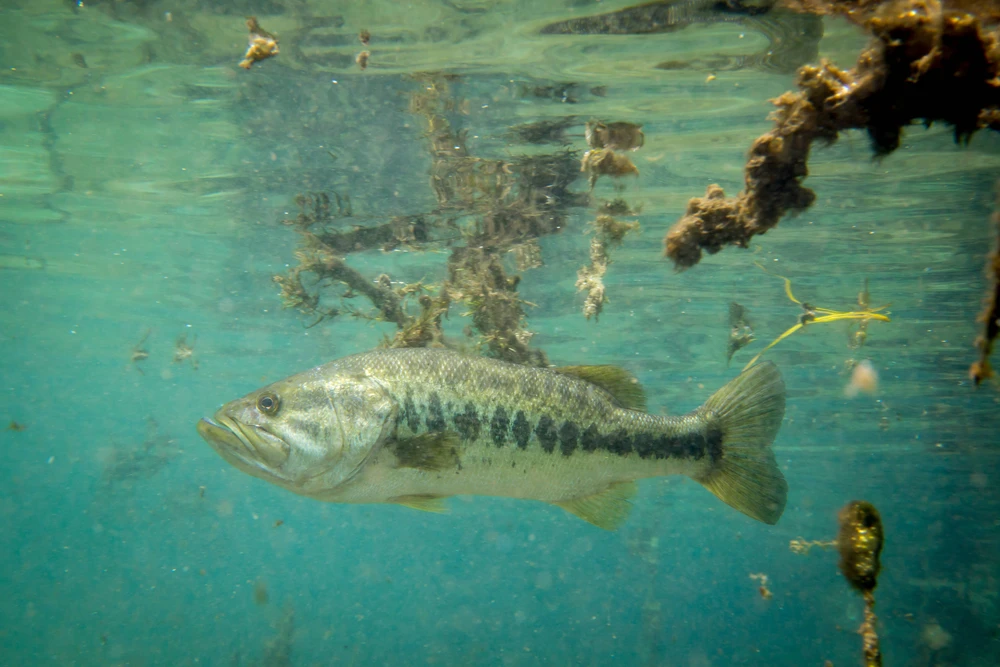





Lorem ipsum
Something along the lines of: we were aware of the importance of some topics so that we wanted to include them and collect data but not score them. For WelfareChecks | farm, these topics are "domestication level", "feed replacement", and "commercial relevance". The domestication and commercial relevance aspects allow us to analyse the questions whether increasing rate of domestication or relevance in farming worldwide goes hand in hand with better welfare; the feed replacement rather goes in the direction of added suffering for all those species which end up as feed. For a carnivorous species, to gain 1 kg of meat, you do not just kill this one individual but you have to take into account the meat that it was fed during its life in the form of fish meal and fish oil. In other words, carnivorous species (and to a degree also omnivorous ones) have a larger "fish in:fish out" ratio.
Lorem ipsum
Probably, we updated the profile. Check the version number in the head of the page. For more information on the version, see the FAQ about this. Why do we update profiles? Not just do we want to include new research that has come out, but we are continuously developing the database itself. For example, we changed the structure of entries in criteria or we added explanations for scores in the WelfareCheck | farm. And we are always refining our scoring rules.
The centre of the Overview is an array of criteria covering basic features and behaviours of the species. Each of this information comes from our literature search on the species. If we researched a full Dossier on the species, probably all criteria in the Overview will be covered and thus filled. This was our way to go when we first set up the database.
Because Dossiers are time consuming to research, we switched to focusing on WelfareChecks. These are much shorter profiles covering just 10 criteria we deemed important when it comes to behaviour and welfare in aquaculture (and lately fisheries, too). Also, WelfareChecks contain the assessment of the welfare potential of a species which has become the main feature of the fair-fish database over time. Because WelfareChecks do not cover as many criteria as a Dossier, we don't have the information to fill all blanks in the Overview, as this information is "not investigated by us yet".
Our long-term goal is to go back to researching Dossiers for all species covered in the fair-fish database once we set up WelfareChecks for each of them. If you would like to support us financially with this, please get in touch at ffdb@fair-fish.net
See the question "What does "not investigated by us yet" mean?". In short, if we have not had a look in the literature - or in other words, if we have not investigated a criterion - we cannot know the data. If we have already checked the literature on a criterion and could not find anything, it is "no data found yet". You spotted a "no data found yet" where you know data exists? Get in touch with us at ffdb@fair-fish.net!
Once you have clicked on "show details", the entry for a criterion will unfold and display the summarised information we collected from the scientific literature – complete with the reference(s).
As reference style we chose "Springer Humanities (numeric, brackets)" which presents itself in the database as a number in a grey box. Mouse over the box to see the reference; click on it to jump to the bibliography at the bottom of the page. But what does "[x]-[y]" refer to?
This is the way we mark secondary citations. In this case, we read reference "y", but not reference "x", and cite "x" as mentioned in "y". We try to avoid citing secondary references as best as possible and instead read the original source ourselves. Sometimes we have to resort to citing secondarily, though, when the original source is: a) very old or not (digitally) available for other reasons, b) in a language no one in the team understands. Seldomly, it also happens that we are running out of time on a profile and cannot afford to read the original. As mentioned, though, we try to avoid it, as citing mistakes may always happen (and we don't want to copy the mistake) and as misunderstandings may occur by interpreting the secondarily cited information incorrectly.
If you spot a secondary reference and would like to send us the original work, please contact us at ffdb@fair-fish.net
In general, we aim at giving a good representation of the literature published on the respective species and read as much as we can. We do have a time budget on each profile, though. This is around 80-100 hours for a WelfareCheck and around 300 hours for a Dossier. It might thus be that we simply did not come around to reading the paper.
It is also possible, though, that we did have to make a decision between several papers on the same topic. If there are too many papers on one issue than we manage to read in time, we have to select a sample. On certain topics that currently attract a lot of attention, it might be beneficial to opt for the more recent papers; on other topics, especially in basic research on behaviour in the wild, the older papers might be the go-to source.
And speaking of time: the paper you are missing from the profile might have come out after the profile was published. For the publication date, please check the head of the profile at "cite this profile". We currently update profiles every 6-7 years.
If your paper slipped through the cracks and you would like us to consider it, please get in touch at ffdb@fair-fish.net
This number, for example "C | 2.1 (2022-11-02)", contains 4 parts:
- "C" marks the appearance – the design level – of the profile part. In WelfareChecks | farm, appearance "C" is our most recent one with consistent age class and label (WILD, FARM, LAB) structure across all criteria.
- "2." marks the number of major releases within this appearance. Here, it is major release 2. Major releases include e.g. changes of the WelfareScore. Even if we just add one paper – if it changes the score for one or several criteria, we will mark this as a major update for the profile. With a change to a new appearance, the major release will be re-set to 1.
- ".1" marks the number of minor updates within this appearance. Here, it is minor update 1. With minor updates, we mean changes in formatting, grammar, orthography. It can also mean adding new papers, but if these papers only confirm the score and don't change it, it will be "minor" in our book. With a change to a new appearance, the minor update will be re-set to 0.
- "(2022-11-02)" is the date of the last change – be it the initial release of the part, a minor, or a major update. The nature of the changes you may find out in the changelog next to the version number.
If an Advice, for example, has an initial release date and then just a minor update date due to link corrections, it means that – apart from correcting links – the Advice has not been updated in a major way since its initial release. Please take this into account when consulting any part of the database.
Lorem ipsum
In the fair-fish database, when you have chosen a species (either by searching in the search bar or in the species tree), the landing page is an Overview, introducing the most important information to know about the species that we have come across during our literatures search, including common names, images, distribution, habitat and growth characteristics, swimming aspects, reproduction, social behaviour but also handling details. To dive deeper, visit the Dossier where we collect all available ethological findings (and more) on the most important aspects during the life course, both biologically and concerning the habitat. In contrast to the Overview, we present the findings in more detail citing the scientific references.
Depending on whether the species is farmed or wild caught, you will be interested in different branches of the database.
Farm branch
Founded in 2013, the farm branch of the fair-fish database focuses on farmed aquatic species.
Catch branch
Founded in 2022, the catch branch of the fair-fish database focuses on wild-caught aquatic species.
The heart of the farm branch of the fair-fish database is the welfare assessment – or WelfareCheck | farm – resulting in the WelfareScore | farm for each species. The WelfareCheck | farm is a condensed assessment of the species' likelihood and potential for good welfare in aquaculture, based on welfare-related findings for 10 crucial criteria (home range, depth range, migration, reproduction, aggregation, aggression, substrate, stress, malformations, slaughter).
For those species with a Dossier, we conclude to-be-preferred farming conditions in the Advice | farm. They are not meant to be as detailed as a rearing manual but instead, challenge current farming standards and often take the form of what not to do.
In parallel to farm, the main element of the catch branch of the fair-fish database is the welfare assessment – or WelfareCheck | catch – with the WelfareScore | catch for each species caught with a specific catching method. The WelfareCheck | catch, too, is a condensed assessment of the species' likelihood and potential for good welfare – or better yet avoidance of decrease of good welfare – this time in fisheries. We base this on findings on welfare hazards in 10 steps along the catching process (prospection, setting, catching, emersion, release from gear, bycatch avoidance, sorting, discarding, storing, slaughter).
In contrast to the farm profiles, in the catch branch we assess the welfare separately for each method that the focus species is caught with. In the case of a species exclusively caught with one method, there will be one WelfareCheck, whereas in other species, there will be as many WelfareChecks as there are methods to catch the species with.
Summarising our findings of all WelfareChecks | catch for one species in Advice | catch, we conclude which catching method is the least welfare threatening for this species and which changes to the gear or the catching process will potentially result in improvements of welfare.
Try mousing over the element you are interested in - oftentimes you will find explanations this way. If not, there will be FAQ on many of the sub-pages with answers to questions that apply to the respective sub-page. If your question is not among those, contact us at ffdb@fair-fish.net.
It's right here! We decided to re-name it to fair-fish database for several reasons. The database has grown beyond dealing purely with ethology, more towards welfare in general – and so much more. Also, the partners fair-fish and FishEthoGroup decided to re-organise their partnership. While maintaining our friendship, we also desire for greater independence. So, the name "fair-fish database" establishes it as a fair-fish endeavour.
